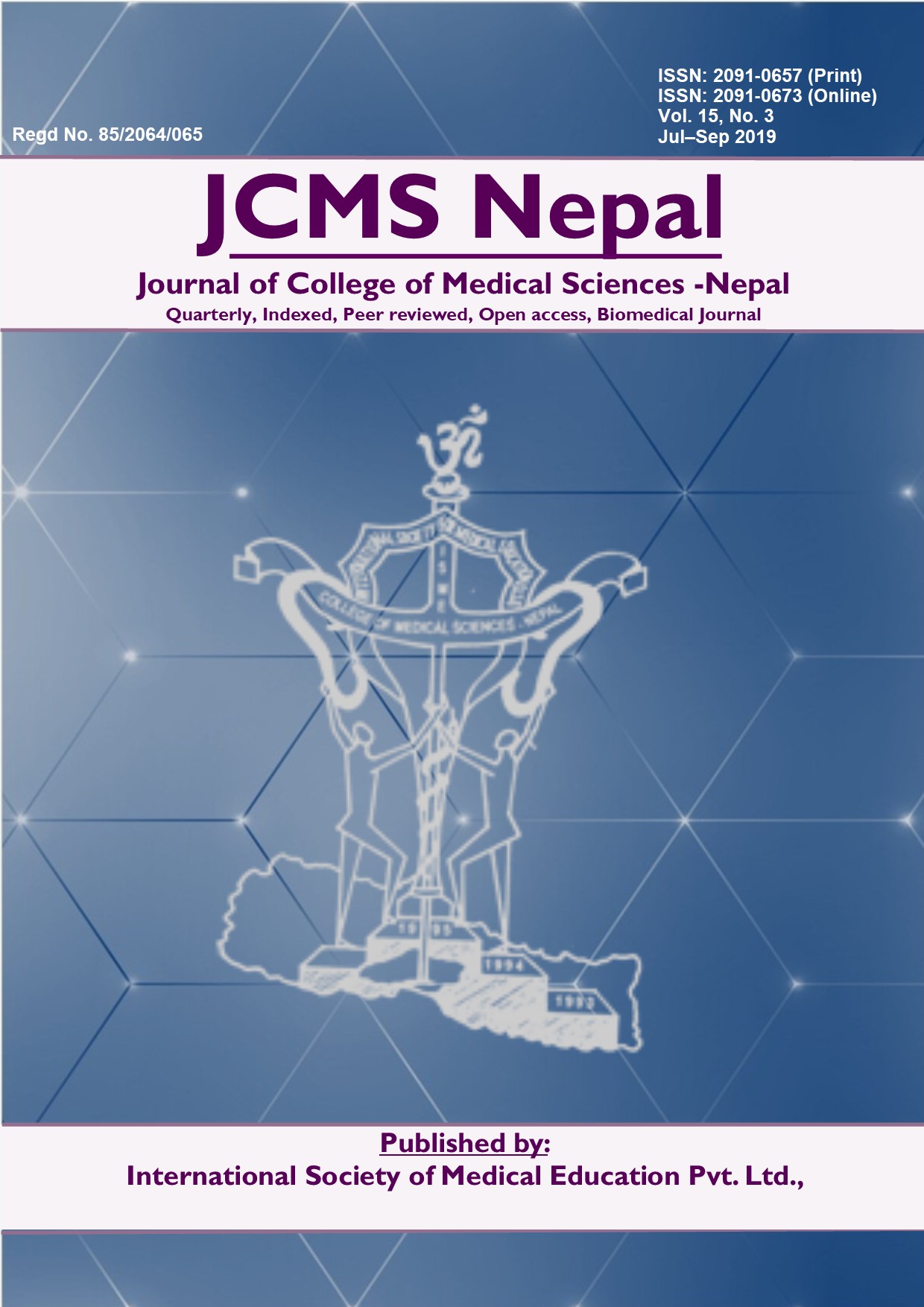Prevalence of Intestinal Parasites among Patients attending a Tertiary Care Centre in Central Nepal
DOI:
https://doi.org/10.3126/jcmsn.v15i3.25209Keywords:
intestinal parasites, helminths, protozoa, infection, central, Nepal.Abstract
Background: Intestinal parasitic infections are important public health problem and are globally endemic. These parasites are responsible for the major share of morbidity and mortality in those communities where there is overcrowding, poor environmental sanitation and personal hygienic practices. Intestinal parasitic infection is highly prevalent among the general population in Nepal. This study was aimed to evaluate the burden of the intestinal parasitic infections and the pattern of distributions among patients attending in a tertiary care setting in Bharatpur, Nepal, over a period of one year (August 2017 to July 2018).
Methods: Stool samples of patients received in the Microbiology laboratory, COMS that were subjected for routine stool investigations were included in this study. Naked eye physical examination, microscopic examination was carried out and parasites were identified in the received stool samples. The results were recorded, and data were entered into excel spreadsheet 2007. The percentages of the parasites present were calculated to find out the frequency and distribution.
Results: A total of 1,558 fresh stool samples were screened, of which 20.60% (n=321) were positive for various intestinal parasites. Overall, helminthic infections (81.30%) were higher than protozoal infections (18.70%). On the whole, Ascaris lumbricoides showed higher prevalence (39.56%) followed by Ancylostoma duodenale (19.31%) and Giardia lamblia (9.97%). 17(1.09%) of the samples showed more than one parasite. Highest prevalence was seen in age group 15 to 25 years of age (27.40%).
Conclusions: Parasitic infection is endemic. Apart from the early diagnosis and effective treatment, health education is a requisite to control infections in this area and awareness of sanitation to reduce and control parasitic infection.
Downloads
Downloads
Published
How to Cite
Issue
Section
License
This license enables reusers to copy and distribute the material in any medium or format in unadapted form only, for noncommercial purposes only, and only so long as attribution is given to the creator.




